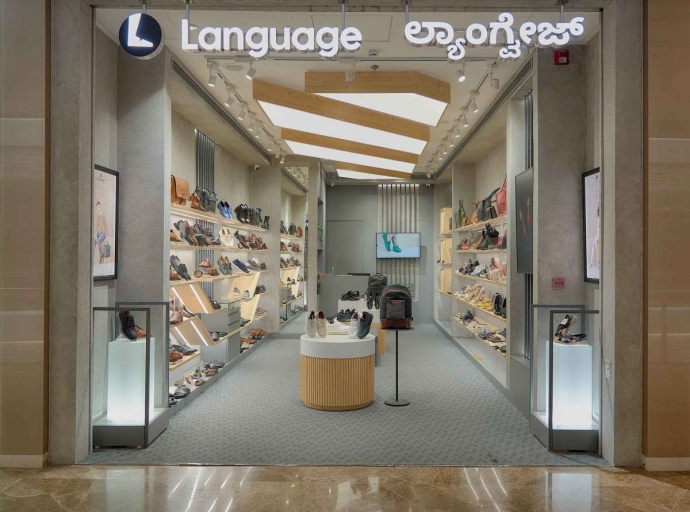22 May, Mumbai 2025
As India’s fashion market matures, consumer appetite for premium and luxury brands is evolving rapidly. Arvind Fashions, a trailblazer in the country’s apparel sector, has responded with a bold retail initiative — Club A, an exclusive multi-brand premium retail chain.
With this endeavor, the company is looking to not just expand its portfolio but also shape the future of high-end retail in India.
DFU Profile
A destination, not just a store
Club A is more than just a collection of storefronts under a common name — it is a curated experience crafted to appeal to India’s discerning, upwardly mobile shoppers. Conceived as a lifestyle destination, Club A offers a blend of international sophistication and localized sensibility.
With an impressive line-up of globally recognized brands such as Tommy Hilfiger, Calvin Klein, U.S. Polo Assn., Arrow, Flying Machine, and Stride, Club A gives access to brands previously available only in standalone stores or online. The store also features a collection of premium accessories, including footwear, handbags, and watches from labels like Cole Haan and Guess. The goal is not merely transactional — it’s transformational, offering an immersive retail experience that resonates with the aspirations of new-age Indian consumers.
Fashion Guru
Why premium fashion is booming in India
India’s fashion retail sector is changing and as per a McKinsey & Company report, India’s apparel market is expected to reach $115 billion by 2026, making it one of the fastest-growing fashion markets globally.
Within this, the premium and luxury segment is forecasted to grow at a CAGR of over 10 per cent, driven by rising incomes, increasing urbanization, and heightened brand consciousness.
Club A taps into this momentum by offering aspirational fashion in physical spaces that are meticulously designed. The focus is not just on products but on an enriched, holistic shopping experience that blends convenience, luxury, and personal attention.
Join our group
Building a national premium network
Initially launched in marquee urban locations such as Indiranagar (Bangalore), Connaught Place (Delhi), Piplod (Surat), and Lucknow Airport, Club A is steadily expanding into emerging metros and Tier-1 cities. Recent additions in Himayatnagar (Hyderabad) and HSR Layout (Bangalore) underscore Arvind Fashions' ambition to democratize access to luxury fashion while maintaining exclusivity.
The expansion strategy is underpinned by three major drivers.
Rising affluence: India is now home to over 140 million middle-class households, and this number is expected to double by 2030, creating a vast consumer base for premium products.
Urban sophistication: Consumers are not only spending more but are also seeking experiential retail environments, where ambiance and service are as important as the merchandise.
Brand equity: With over 25 international brands under its belt, Arvind Fashions is leveraging its extensive brand partnerships to create a differentiated, high-trust offering.
Join our community
Elevating the retail experience
Each Club A outlet is designed to mirror the aesthetic and identity of the brands it houses. Store layouts are sleek and contemporary, punctuated with high-end materials, strategic lighting, and curated product displays that appeal to modern sensibilities.
The introduction of dedicated concierge services marks a clear departure from traditional multi-brand retail formats. These services provide shoppers with personalized assistance, style consultations, and a seamless, white-glove shopping journey that aligns with global luxury standards.
The ambiance is equally critical. Soft jazz playing in the background, spacious fitting rooms, and visually immersive displays contribute to a boutique-like experience. This high-touch service model is Club A's key differentiator in an increasingly crowded market.
Visit for more
Arvind Fashions’ from apparel major to luxury curator
With over 1,300 points of sale across India and a portfolio spanning everything from mass-market denim to luxury tailoring, Arvind Fashions is no stranger to scale. However, Club A represents a new strategic direction — one that focuses on controlling the retail narrative and offering customers a curated brand journey under one roof.
The company’s intent is threefold. To enhance brand visibility by giving premium labels their own environment; exercise tighter control over customer experience through exclusive formats; gain deeper insights into consumer preferences via direct engagement.
Therefore, this move is particularly timely, given the competitive pressures in the fashion sector. Arvind is proactively repositioning itself as a retail tastemaker rather than merely a distributor.
Standing out in a crowded market
India's premium retail scene is becoming increasingly competitive. Global giants like Zara, H&M, Uniqlo, and Marks & Spencer are expanding aggressively, while e-commerce platforms like Ajio Luxe, Myntra, and Tata CLiQ Luxury are capturing a sizable share of luxury sales. Department store chains like Shoppers Stop and Lifestyle are also evolving to serve the same demographic.
Yet, Club A distinguishes itself by merging the multi-brand convenience of department stores with the bespoke experience of mono-brand luxury boutiques. Its physical presence in high-footfall areas, paired with a merchandise mix, offers a compelling value proposition to aspirational consumers.
The road to premium retail dominance
Arvind Fashions' investment in Club A is a long-term play, built on deep insights into consumer behavior, urban lifestyle trends, and the growing appeal of luxury. As India’s GDP per capita continues to rise and consumer sophistication increases, demand for experiential, high-quality fashion retail will only intensify.
The company’s ability to scale Club A without compromising on service quality, brand curation, or store ambiance will be central to its success.
If executed effectively, Club A could emerge as India’s answer to Selfridges or Saks Fifth Avenue — not just a store, but a signature of urban Indian fashion identity. In a country where fashion is increasingly a statement of personal success and cultural capital, Club A is not just retail — it is aspiration made tangible.
LATEST FASHION NEWS





































